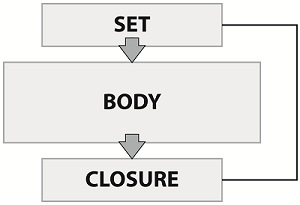Documentation:Guide to Teaching for New Faculty at UBC/Resource 3: Lesson planning
There are many lesson planning models that you can use. For the most part they have the similar pieces and slightly different organizational schemes. The important thing is to find one that works for you.
The Instructional Skills Workshops that are offered through the Centre for Teaching, Learning and Technology uses a models known as BOPPPS. BOPPPS stand for Bridge, Objectives, Pre-Test, Participatory Learning, Post-Test, and Summary. We have presented a different model known as Set-Body-Close - this model incorporates the BOPPPS components into a slightly different framework.
Another model for lesson planning is known as Set-Body-Close. It conceives lessons as encompassing 3 stages: the instructional SET, the BODY, and the CLOSE.

Set
The “set” of your lecture sets the stage for the learning that is to follow. It consists of six elements: establishing the mood, motivating the students, describing utility of the information to be presented, providing an overview of the content that will be covered, finding out what students already know about the content (knowledge base) and finally establishing clear objectives for the lesson.
Body
In the body you will present and work with the content you are hoping the students will begin mastering. It is important to limit the amount of content you cover so you do not overload the students. It is generally a good plan to move from the big picture to the details and finally back to the big picture (known as the whole-part-whole approach). You should be distinguishing the need to know from the nice to know, and finally vary the stimuli using activities, questioning, voice, eye contact, silence and audio-visual aids.
Close
The closure has four main elements: you should summarize what has been covered, relate back to the set, either finishing the story or reviewing the objectives, give students a sense of achievement, and most importantly present NO new information.